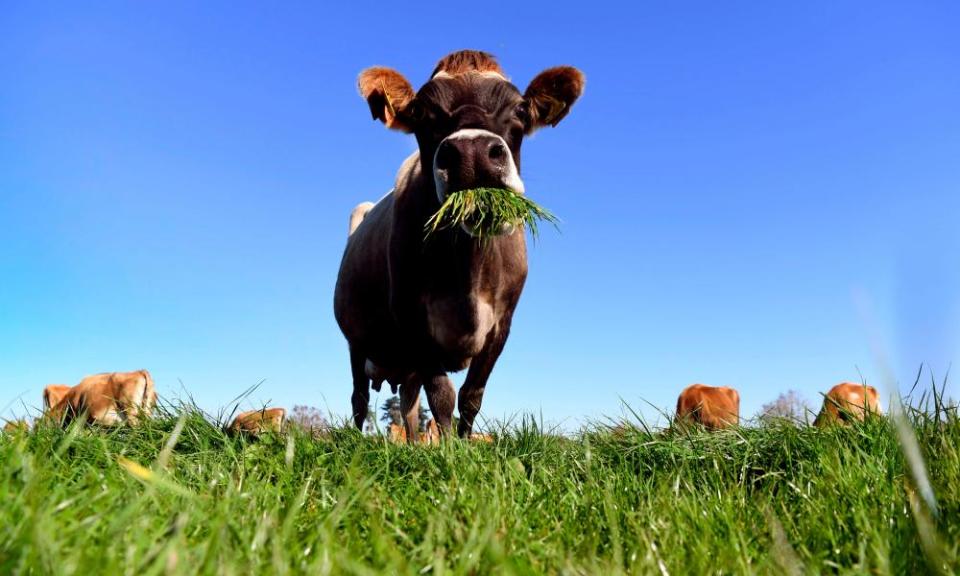Burps in space: new satellite to track global methane emissions

In space, no-one can hear you belch – at least, not for the time being. New Zealand has announced mission control for a new satellite that will orbit the earth observing methane produced by burps or other flatulence from cows.
The digestive processes of its 6.3 million-strong cow population are among New Zealand’s most critical environmental problems. Agriculture is one of the country’s biggest producers of the greenhouse gases that contribute to global heating and climate breakdown.
Last year, global methane rose to the highest levels on record, driven by farming and fossil fuel use. Methane makes up 43% of New Zealand’s total greenhouse gas emissions, and more than 80% of that is produced by agriculture, primarily through the digestive processes of large ruminant animals.
Related: Feeding cows seaweed could cut their methane emissions by 82%, scientists say
Soon, those gases will be seen from space – more specifically, from a 350kg satellite, dubbed the “MethaneSAT”, which will circle the planet at around 28 times the speed of sound. The satellite will be able to track methane emissions “with unprecedented accuracy,” the government said in a statement.
A US-based science team, run out of Harvard University, will lead the science on methane emissions from the oil and gas industry, including tracking leaks on long pipelines. The New Zealand science team will focus more on agricultural emissions.
Local greenhouse-gas researcher Sara Mikaloff-Fletcher, who will lead that research effort, told Stuff the satellite would use New Zealand as a testing ground for checking the accuracy of its agri-methane detection, comparing the satellite’s own measurements with the New Zealand government’s. Because many countries don’t keep accurate or comprehensive records on agricultural emissions, the research could help scientists and politicians establish how much methane is actually being produced by animal farming.
The project will “increase [New Zealand’s] reputation for future space missions and provide vital data to support our own climate change policy,” Megan Woods, minister for research, science and innovation, said. Local space company Rocket Lab has won the government contract to set up and run mission control for the satellite, it announced on Friday. After around a year, control will be handed over to Auckland University’s Te Pūnaha Ātea – Auckland Space Institute.
Due to be launched next year, MethaneSAT was partly funded by the New Zealand government, and the United States Environmental Defense Fund, among others. New Zealand was a major funder of the project, contributing NZ$26m. While mission control will be run from New Zealand, the site of the rocket’s launch has not yet been announced. It will likely be from the United States.

 Yahoo Finance
Yahoo Finance 